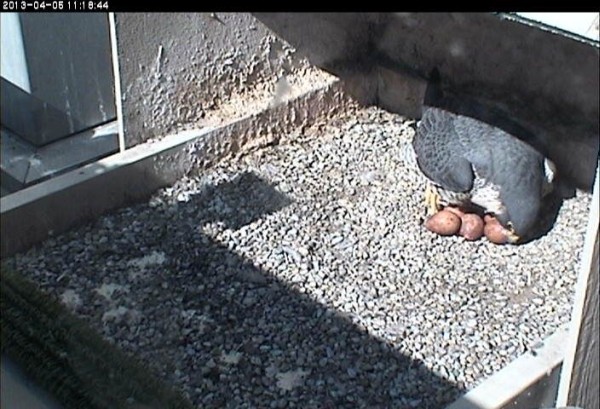
During incubation there’s not a whole lot of activity at a bird’s nest except for this: Mom (or Dad) periodically stands up, stares at the eggs and draws each one toward her with her beak. She’s not just rearranging the eggs, she’s turning them.
Other than a few notable exceptions, all birds turn their eggs because it’s required for the embryos’ survival. For instance:
- The temperature in the middle of a clutch is warmer than the edge. Birds move the outer eggs to the middle to keep them evenly heated.
- In the early days of incubation, it’s important that the embryo floats inside the egg while the membranes that support its life are growing and developing. Turning optimizes membrane growth.
- Eventually the chorion and allantoic membranes will be pressed to each other and to the shell. If these membranes adhere too soon the chick will not be able to move into the hatching position later and get out of the egg. Turning prevents premature adhesion.
- The albumen (the egg white) is the embryo’s fluid cushion and water supply. Turning the egg optimizes the fluid dynamics of the albumen so the chick can absorb it properly.
Egg turning is so important that it’s a wonder some species don’t do it. One notable exception are the megapodes who lay their eggs in compost heaps and let the heat of the decomposing vegetation incubate them. No turning there!
I’d rather watch a peregrines’ nest where things are happening, if only a bit of egg turning.
(photo of Dorothy turning her eggs from the National Aviary falconcam at University of Pittsburgh. Today’s Tenth Page is inspired by page 460 of Ornithology by Frank B. Gill.)